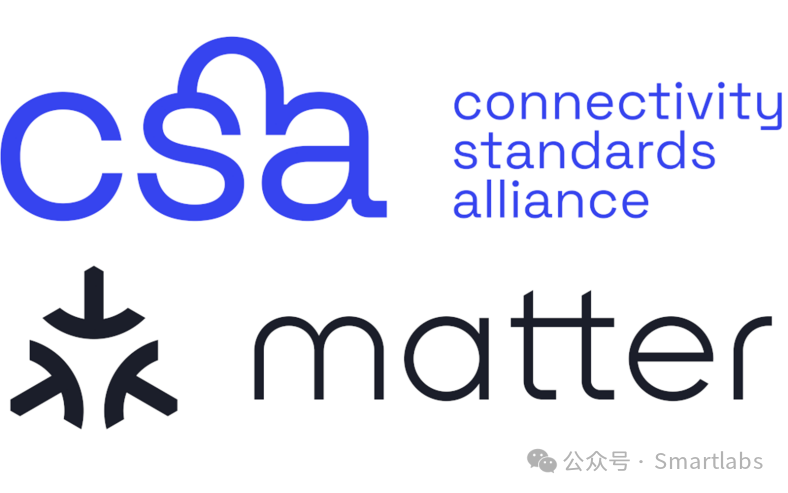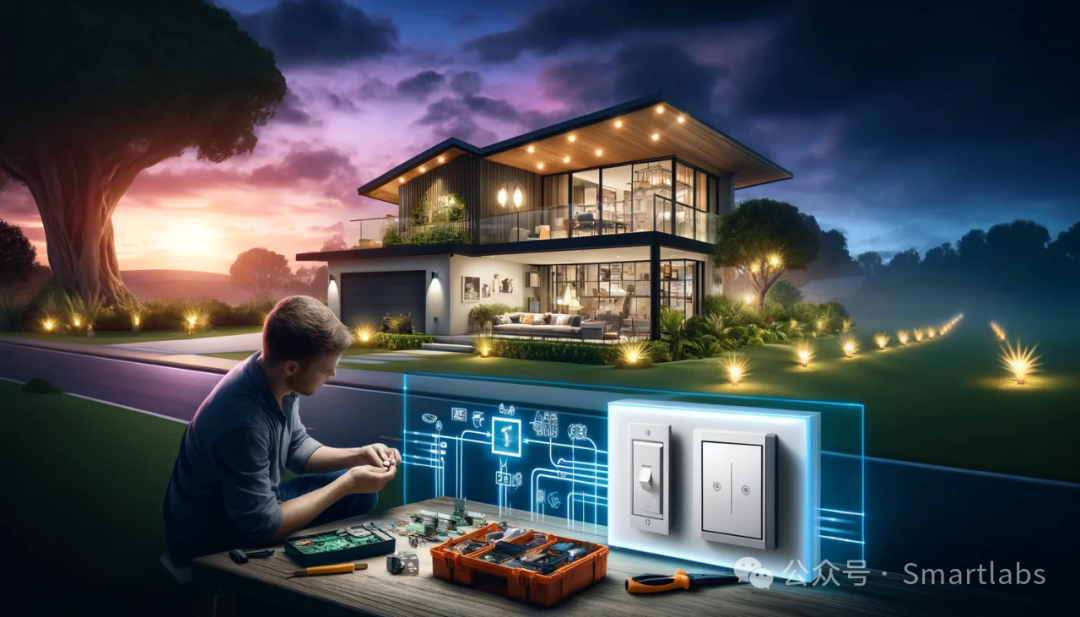☝ Click on the above “Smartlabs”, and follow us
1. The Shift from Fragmentation to Unification in Smart Home Protocols
1.1 Three Technological Revolutions Reshaping the Industry Landscape
The birth of the Zigbee protocol in 2003 was like injecting the first stream of vitality into smart homes. Its low-power characteristics based on the IEEE 802.15.4 standard enabled Xiaomi’s early smart home kits to achieve wireless interconnection of door/window sensors and human body sensors. However, as the number of devices surged, Zigbee’s transmission distance limitation of 10-100 meters became apparent in larger homes, forcing users to expand coverage through multiple gateways.
The emergence of the Thread protocol in 2015 was like dropping a “smart bomb” in the smart home field. The HomePod mini in Apple’s HomeKit ecosystem serves as a Thread node, creating a self-healing mesh network that supports over 250 devices. Even if a device goes offline, the network can automatically switch paths to maintain communication. This IPv6-based technological innovation has improved the stability of smart homes by 300%.
The launch of the Matter protocol in 2022 completely rewrote the rules of the game. When Amazon Echo speakers can control Philips Hue bulbs and Apple HomePod interacts with Xiaomi cameras, a new era of cross-brand compatibility officially begins. This IP-based open-source architecture has reduced development costs for device manufacturers by over 30%, allowing small and medium-sized manufacturers to quickly launch compatible products through platforms like Tuya Smart.

1.2 The Fatal Flaws of Three Major Protocols
- Wi-Fi Although it has wide coverage, devices like smart locks and wireless sensors that use Wi-Fi see battery life plummet from 2 years to just 3 months, severely impacting user experience.
- BLE Signal attenuation can reach 70% with wall obstructions, and the success rate of complex scene interactions is less than 50%, failing to meet the needs of whole-home intelligence.
- Zigbee Is incompatible with the underlying architecture of Matter, requiring hardware redesign for upgrades, increasing manufacturers’ transformation costs by 40%, and skyrocketing user costs for device replacements.
2. The Survival Crisis of Zigbee Under the Technological Gap of Matter

2.1 Technological Dimensionality Reduction Attack
The end-to-end encryption technology of the Matter protocol increases the difficulty of cracking by 100 times, reaching financial-grade security standards. In the Apple HomeKit ecosystem, data transmitted by smart locks via the Matter protocol cannot be decrypted even if intercepted. In contrast, Zigbee devices were reported to have 17 high-risk security vulnerabilities in 2024, far exceeding the industry average.
The hybrid networking capability allows the cost of making Matter compatible with Zigbee devices to be only $5. Xiaomi’s Matter gateway can seamlessly integrate existing Zigbee devices into the new ecosystem, reducing user upgrade costs by 60%. In contrast, complaints about compatibility among different manufacturers’ Zigbee devices account for 37%, with issues like one brand’s socket failing to connect with another brand’s gateway being common.
2.2 Market Data Overwhelming
ABI Research predicts that by 2030, 50% of smart home devices will be equipped with the Matter protocol. Apple HomeKit has already covered over 1200 products, and IKEA fully supports Matter, allowing users to control multiple devices like lights and curtains simultaneously through Siri voice commands. Meanwhile, the Zigbee Alliance has seen a member loss rate of 40%, with chip giants like Texas Instruments shifting to Thread solutions, leading to a 30% increase in the supply gap for Zigbee chips.
2.3 The User Experience Gap
Zigbee devices have an average response delay of 1.5 seconds, with a scene interaction success rate of only 68%. Users often experience the awkwardness of “no response” when trying to turn on lights with smart speakers. The network configuration process is also complex, with the average time for ordinary users to complete whole-home setup being 4.2 hours, far exceeding Matter’s rapid configuration time of 5 minutes. This user-unfriendly design has resulted in a return rate for Zigbee devices being 2.3 times higher than that of Matter.
3. The Battle of Giants: The Commercial War Behind Standardization
3.1 The Ultimate Struggle for Ecological Closure
Apple has deeply integrated Matter into HomeKit, allowing users to control all Matter-supported devices through a single app after iOS system updates, increasing ecological stickiness by 40%. Google has launched the Home API development platform to attract developers to create applications based on the Matter protocol, with over 2000 third-party applications already integrated. Amazon has integrated Matter into AWS cloud services, reducing enterprise deployment costs by 50%, enabling startups to quickly build solutions.
Chinese manufacturer Aqara has launched dual-protocol devices that support both Zigbee and Matter, allowing users to gradually transition to the new ecosystem. Its scene sensor FP2 uses distributed AI computing to achieve human posture recognition and fall detection, pushing whole-home intelligence into the 3.0 phase.
3.2 The Butterfly Effect of Technological Evolution
The 5G RedCap technology reduces transmission power consumption by 80%, allowing devices like smartwatches and wireless sensors to connect directly to 5G networks without relying on Wi-Fi or Bluetooth. The popularity of Wi-Fi 7 has tripled local network transmission speeds, reducing 4K video streaming latency to below 20ms.
The development of edge computing technology allows smart cameras to perform image analysis locally, improving data processing efficiency by 5 times and reducing privacy leakage risks by 70%. AI automatic networking algorithms dynamically optimize connection paths, increasing device onboarding speed by 5 times, eliminating the need for manual configuration when adding new devices to the home.
4. Outlook2026New Era of Smart Homes
4.1 The Inevitability of Protocol Unification
By 2026, the average number of connected smart home devices is expected to exceed 30, making protocol unification a rigid demand. With its open-source characteristics and cross-brand compatibility, Matter is projected to capture 70% of the market share. The contribution of the open-source community exceeds 60%, accelerating the protocol iteration cycle to 6 months and quickly integrating new technologies like AI and edge computing.
The European Union plans to incorporate Matter into CE certification, and Chinese manufacturers have begun large-scale adaptations to enter the European market. Driven by policy, the shipment volume of Matter devices is expected to exceed 2 billion units by 2026.
4.2 The Revolution of User Experience
Multimodal interactions such as voice, gesture, and biometrics will account for 85%, with app control becoming auxiliary. When users return home, facial recognition will automatically unlock the door, and the system will adjust the temperature and play music based on habits. Self-discovery and self-configuration features will become standard, allowing newly purchased cameras to automatically link with speakers and TVs upon power-up, achieving a “zero-operation” experience.
Scene adaptive learning systems will automatically optimize device interaction strategies through AI analysis of user behavior. For example, playing relaxing music automatically on weekends and turning on the coffee machine in advance on weekdays, improving energy efficiency by 30%.
Conclusion:
The curtain call for the Zigbee protocol is not coincidental, but rather the result of the interplay of technological iteration, market choice, and user demand. The rise of the Matter protocol marks a leap from “function realization” to “experience reconstruction” in smart homes. As we look back from 2026, those once-dominant protocols will ultimately become historical footnotes, while the seamless intelligence under a unified ecosystem will be the ultimate form of the future.Do you think the Zigbee protocol will completely disappear by 2026 or transition from the “foreground” to the “background,” becoming an optional technology in the IoT ecosystem? Feel free to share your thoughts in the comments section.
